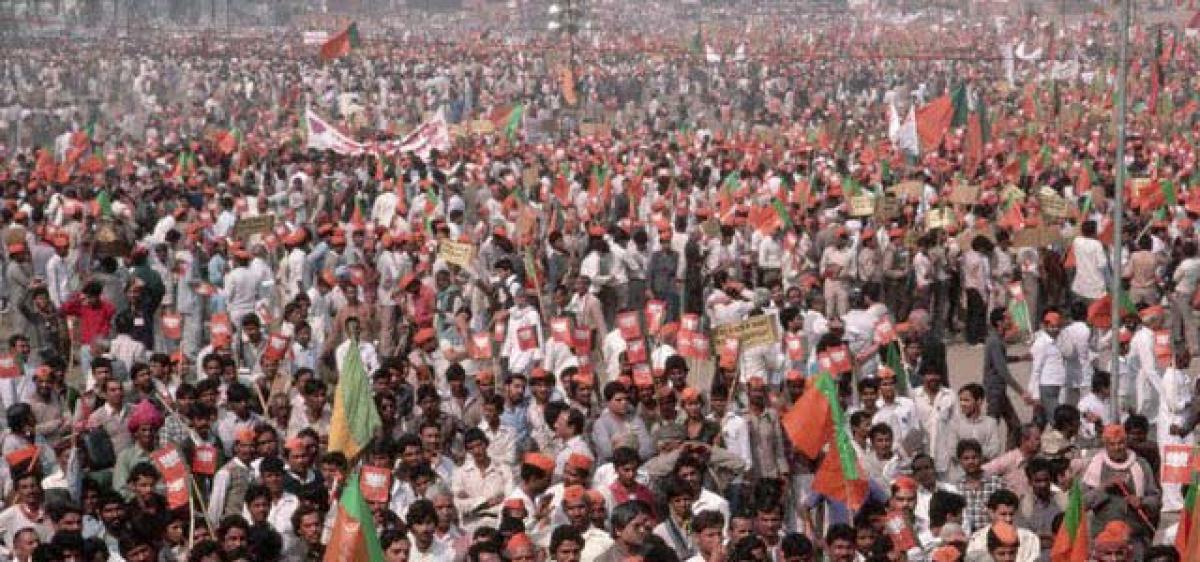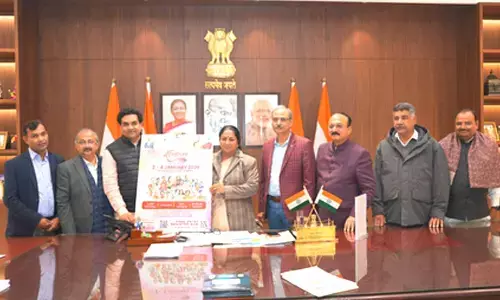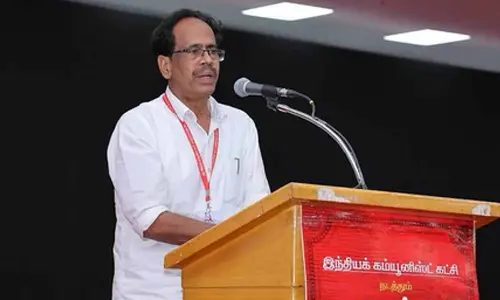Right to Assemble Vs Power to Restrict

The denial of permission to Telangana Joint Action Committee (TJAC) to hold a rally and a public meeting in Hyderabad on the question of jobs as well as the subsequent announcement by the latter to hold the protest despite possible repression raises several pertinent legal questions.
The denial of permission to Telangana Joint Action Committee (TJAC) to hold a rally and a public meeting in Hyderabad on the question of jobs as well as the subsequent announcement by the latter to hold the protest despite possible repression raises several pertinent legal questions.
As noted by Menaka Guruswamy in her chapter dealing with Constitutional issues related to assembly in The Oxford Handbook of the Indian Constitution (edited by Sujit Choudhary et al), the freedom to assemble is a cornerstone of the life of citizens in a constitutional democracy. These freedoms enable organising for the achievement of collective aims and for the engagement of citizens with one another.
These freedoms are thus among the first rights or freedoms to be restricted by any state. The Constitution of India provides for freedom to assemble. Article 19(1) (b) of the Constitution accords every citizen right to assemble peaceably and without arms.
There is an incongruity between the constitutional provisions that enable right to assemble and the provisions of criminal procedure legislation that restrict this right. But, this incongruity is of colonial legacy and a democratic state should hardly take recourse to such draconian provisions.
The TJAC cites the Constitutional text while the police, the visible arm of the state, refer to the CrPC. It’s true that the criminal procedure legislation empowers the state to regulate the expression of the Constitutional right to assemble and even peremptorily curtail its exercise.
The Constitution or the law may empower the state with such provisions to regulate rights. But, more than the letter, it is the spirit of the law that matters more in a democratic society. Such legal provisions make sense in a colonial state; its continuation in modern India is uncalled for.
In contemporary India, the CrPC substantially impacts the right to freely assemble. The police may cite the CrPC provisions to restrict rallies and meetings either prior to the convening of such events or once the meeting or rally starts.
But, such restrictive provisions should only be sparingly used when there is a clear danger to public order. But, the danger to public order cannot be vaguely defined or perceived to suit the position of state and its intention to curb citizens’ rights guaranteed in the Constitution. The politics and governance are a carefully crafted art that respects Constitutionalism rather than finding escape routes to deny the Constitutionally guaranteed rights on some or other pretext, often suiting the state’s political project.
In Babulal Parate v State of Maharashtra, the Supreme Court dealt with the dichotomy between the freedom to assemble and the power to curtail this freedom. While agreeing that public order is one such instance of a ground that warranted restrictions on activity in advance, the court observed that Section 144 did not suppress any lawful action and only permitted anticipatory action by an authority where the danger to public order was genuinely apprehended.
Neither the Constitution nor any law in a democratic state grants sweeping powers to state to curtail freedom to assemble on the pretext of public order. It’s worth recalling the observations of Supreme Court in Re-Ramlila Maidan Incident vs Home Secretary And Ors (2012). Justice Swantanter Kumar noted that it must be borne in mind that the provisions of Section 144 of CrPC are attracted only in emergent situations. The emergent power is to be exercised for the purposes of maintaining public order.
But, a clear distinction needs to be drawn in deciding what constitutes public order. The apex court in Romesh Thappar v. State of Madras [1950] said that the Constitution requires a line to be drawn in the field of public order and tranquility, marking off, may be roughly, the boundary between those serious and aggravated forms of public disorder which are calculated to endanger the security of the state and the relatively minor breaches of peace of a purely local significance, treating for this purpose differences in degree as if they were different in kind.
It’s also worth mentioning here what the First Amendment to the United States (US) Constitution, a bellwether in the pursuit of expanding the horizon of civil liberties, states. It states that, "Congress shall make no law abridging the right of the people peaceably to assemble, and to petition the Government for a redress of grievances." Indian democracy also cherishes the spirit of this historic first amendment to the US Constitution. The state regulation of this freedom to assemble should be tested on touchstone of the rule of `clear- and-present-danger.’
The doctrine of `balancing of interests' should be applied carefully between the freedom of citizens and public order.
It’s true that freedom to assemble and other similar such freedoms are not absolute under Indian Constitution. The Constitution empowers state to subject these rights to ‘reasonable restrictions.’ In the case of Himat Lal K Shah v. Commissioner of Police, Ahmedabad, & Anr. (1973), the Constitution Bench of Supreme Court, while dealing with a situation where a person seeking permission to hold a public meeting was denied the same on the ground that under another similar permission, certain elements had indulged in rioting and caused mischief to private and public properties, observed as under :
"......It is not surprising that the Constitution makers conferred a fundamental right on all citizens 'to assemble peaceably and without arms.’ While prior to the coming into force of the Constitution the right to assemble could have been abridged or taken away by law, now that cannot be done except by imposing reasonable restrictions within Article 19(3)...”. But, the apex court in the case of Maneka Gandhi v. Union of India (1978) stated that the test of reasonableness is to be ‘right and just and fair and not arbitrary, fanciful or oppressive.’
Cautioning that a democratic state should be careful in deriving its actions from the law, the Supreme Court in Madhav Hayawadanrao Hoskot v. State of Maharashtra (1978) stated: "Procedure established by law are words of deep meaning for all lovers of liberty and judicial sentinels."
It , therefore, can clearly be assumed from Indian jurisprudence that the interpretation of Indian Constitution does not permit arbitrary or superficial view of what constitutes danger to public order to warrant ‘reasonable restrictions’ on freedom to assemble.
As observed by the apex court in Re-Ramlila Maidan (supra), the restriction should be founded on the principle of least invasiveness i.e., the restriction should be imposed in a manner and to the extent which is unavoidable in a given situation.
Absence of `public order' is an aggravated form of disturbance of public peace which affects the general current of public life. Any act which merely affects the security of others may not constitute a breach of `public order.'
A mere perceived challenge to law and order cannot also be equated with threat to public order to justify restrictions of freedom to assemble. In fact, the apex court in Dr. Ram Manohar Lohia v. State of Bihar (1966) observed that an activity which affects `law and order' may not necessarily affect `public order.’
Absence of `public order' is an aggravated form of disturbance of public peace which affects the general current of public life. Any act which merely affects the security of others may not constitute a breach of `public order.'
Woman injured in stabbing attack in Tokyo, suspect at large
Bengal cop booked for murder over mysterious death of woman home guard, SIT to probe case
Staffer recalls horror of 7-kg gold robbery by armed gang in Karnataka’s Hunsur
25-Year-Old Airline Cabin Crew Member Dies At Gurugram Party; Police Begin Investigation














